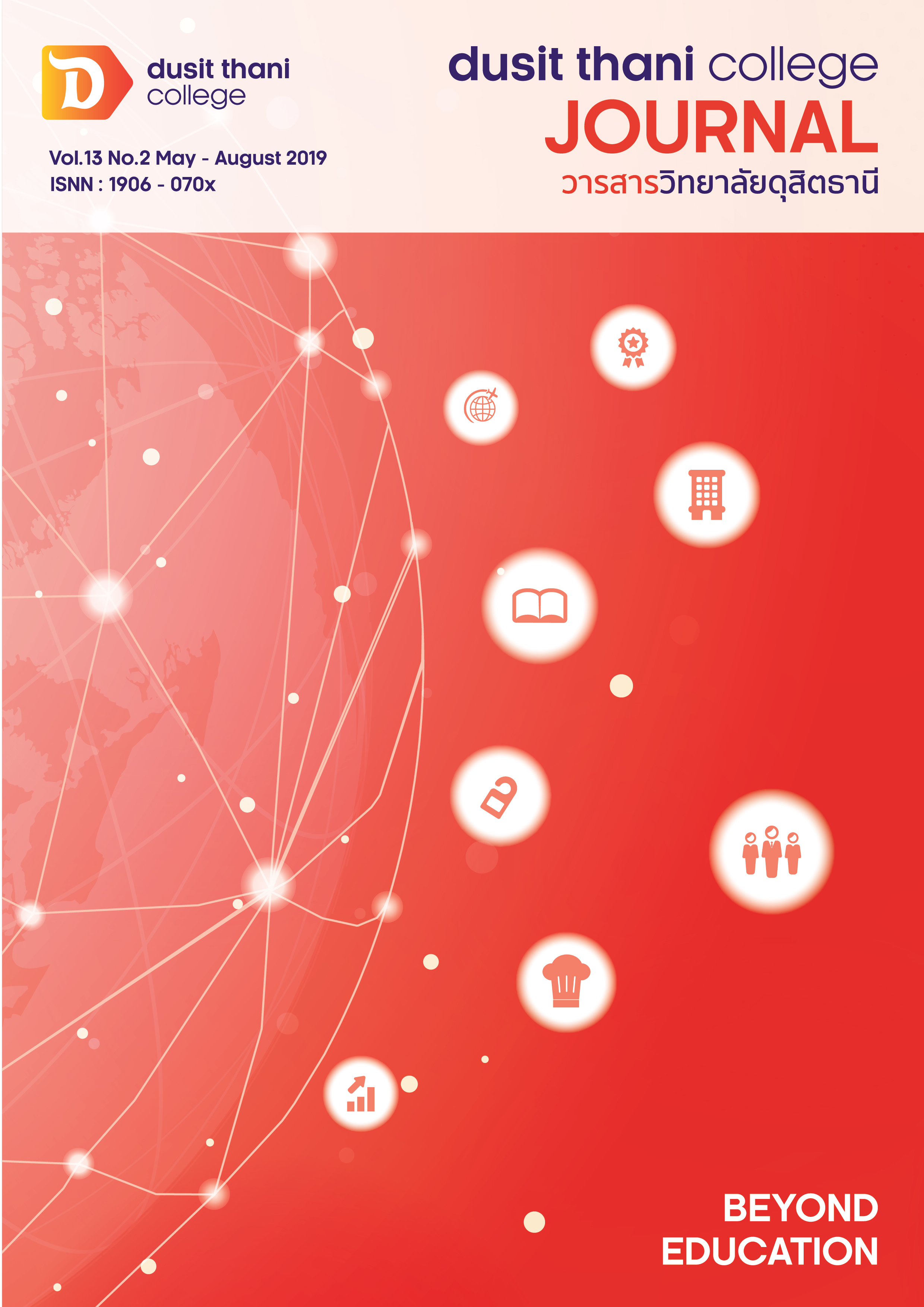Human Resource Management for Tourism Promotion in Thailand
Main Article Content
Abstract
Human resources are an important resource and are considered as the most valuable resource of every organization. This article aims to analyze and discuss about guideline of human resource management for tourism promotion in Thailand, as the tourism industry. It requires a lot of human resources in a variety of functions. Human resources are the creators and drivers of the tourism industry. Therefore, Thailand should manage human resources related to the tourism industry in all sectors, such as public, private and tourists. It is regarded as a stakeholder in tourism. Human resources management must focus on the development of all parties and dimensions. Moreover, all parties should play a role in raising awareness and working together to support Thailand's tourism development to better standards and promote Thailand's tourism to be sustainable.
Article Details
Article Screening Policy
- All research and academic articles to be published must be considered and screened by three peer reviews in the relevant field / article.
- All articles, texts, illustrations and tables published in the journal are the personal opinions of the authors. Editors don't always have to agree. And no responsibility whatsoever is the sole responsibility of the author.
- The articles to be published must never be published. Where did you first publish? And not in the consideration of other journals If the audit found that there has been a duplicate publication It is the sole responsibility of the author.
- Any article that the reader sees as being plagiarized or impersonated without reference. Or mislead the work of the author Please let the journal editor know it will be your greatest blessing.
References
13th Ed. Ashford Colour press Ltd : UK
2. Bank of Thailand. (2017). Monetary Policy Report March 2017
3. Hurtte, F. (2014). Data Free Conversation-No, Powerful Data Sharing-Yes. Retrieved
November 6, 2018, https://www.riverhightsconsulting.com
4. Kaewnet Pornchanit. (2017). Curriculum development guidelines of teaching and learning management in tourism and services In Thailand 4.0 era: adaptation together in all sectors, search on 5 November 2017
http://www.tourism.go.th/assets/portals/1/news/7602/1.pdf
5. Longpraseert Sunee and Pluemjai Paijit. (2016) Business Ethics of Tourism in Koh Samui District Suratthani Province. Journal of Management Sciences, 3(1)
6. Mahapitakate, P. (1995). Villagers and channel factor. The concept of co-operative
conservation of the tours. Bangkok : King Prajadhipok’s Institute. (in Thai)
7. Maneeroj Natthapat. (2017) Community Based Tourism Management. Journal of International and Thai Tourism, 13(2) Mastercard. (2018). Big Cities, Big Business: Bangkok, London and Paris Lead the Way in Mastercard’s 2018 Global Destination Cities Index. Retrieved November 6, 2018 https://newsroom.mastercard.com/press-releases/big-cities-big-business-bangkok-london-and-paris-lead-the-way-in-mastercards-.2018-global-destination-cities-index/
8. Mclntosh, Goeldner and Ritchie. (1995) Tourism : Principles, Practices, Philosophies.
New .York : Wiley
9. Megginson David, Paul Banfield, and Jannifer Joy-Matthews. (1999). Human Resource
Development. 2nded. London : Kogan Page 6.
10. Ministry of Tourism and Sports. (2018). Press release on the tourism situation in September 2018.
11. Nampratai Pawinee. (2017) Tourism Element. Retrieved June 24, 2019, from
https://tourismvbac.blogspot.com/p/2.html.
12. National Economic and Social Development Plan No.12 (2017 - 2021). Bangkok:
Office of the National Economic and Social Development Board
13. Ongkruab Somyot. (2014). Concept of tourism development and sustainable tourism development. Chiang Mai University. Search on 14 November 2018
https://www.slideshare.net/blackstarshooter99/7-1-37072398
14. Pholnil Somkid. (2015). Human resource development and organizational environment Influencing team work, case studies of the National Park, Wildlife and Plant Conservation Department Master of Public Administration, Graduate School Silpakorn University
15. Rerkkham Suttee. (2014). Human resource development: principles and applications. 1sted., Bangkok: Chulalongkorn University Publishing House.
16. Roopsuwankun Pattama. (2019) Human resource management and work performance in Rojana Industril Park, Phra Nakhon Si Ayutthaya province. Journal of Humanities and
Social Sciences Thonburi University, 13(1)
17. Samerjai Chatyaporn. (2004). Management and marketing services. Bangkok: Sor. Asia PressSecond National Tourism Development Plan (2017 - 2021). Bangkok: Veterans Organization Publishing House
18. Seyanon Arisara. (2017). Entrepreneurship in the tourism industry. 1st ed., Bangkok: V. Print (1991)
19. Soodjai Suttinee and Pinij Tipmanee. (2016) Legal measures for Tourism Business Control. Journal of graduate Dhurakij Oundit University, 5(1)
20. Sowajassatakun Thanongsak. (2009). Factors of human resource management affect the success of the operation of the information system of educational institutions. Bangkok: National Research Council of Thailand.
21. Sriluangsawat Rungroj. (2014). Availability of Thai tourism to support Chinese tourists. Search on 10 November 2018 http://www.okmd.or.th/fast-forward-talk /articles/438/
22. Sriwattanasarn Pittaya. (2010). Books, teaching materials, travel industry Dhurakij Pundit University.
23. The Tourism Authority of Thailand Market Research Division. (2017). Why is it necessary? Amazing Thailand Tourism. Tourism of Thailand. In the tourism academic booklet. (October - December. 2017).
24. Tourism Authority of Thailand Enterprise Plan 2017 - 2021
25. UNWTO. (2017). International year of sustainable tourism for development 2017
26. UNWTO. (2018). Tourism Highlights 2018 Edition
27. U-On Somchat. (2009). Ecotourism and planning. Nakhon Pathom: Department of Geography Arts Council Silpakorn University.
28. Wantanom Chantouch. (2009). Tourism industry. 1sted. Bangkok: Sam Lada.
29. Warakunwit Saranya (2015). Tourism industry. 1sted. Bangkok: Waw Wow Printing
30. Yamlaor Pattaraporn and Thanyatida Sasoonthorn. (2017) Literature Review "Sustainable human resource service concept." Thai Health Promotion Foundation (ThaiHealth)


